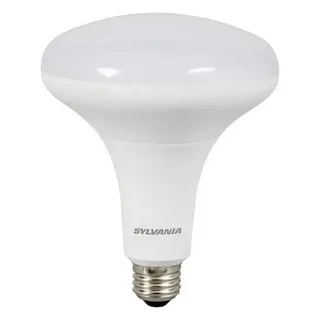LED lighting has revolutionized home and commercial lighting with its energy efficiency, longevity, and versatility. But when it comes to dimming LED lights, things can get a little tricky. If you’ve ever installed an LED bulb only to find it flickering, buzzing, or failing to dim smoothly, you’re not alone.
This guide is here to help you confidently understand how to dim LED lights, choose the right dimmable LED bulbs, and ensure they’re compatible with your dimmer switches. Whether you’re creating cozy ambiance in your living room or adjusting brightness for workspaces, dimmable LEDs offer unmatched flexibility—if you get the setup right.
Why Dimming Matters
Dimmable lighting isn’t just about mood lighting. Dimming your LED lights can:
- Reduce energy consumption even further
- Extend the life of your bulbs
- Improve comfort and reduce eye strain
- Help control brightness based on time of day or activity
But not all LEDs are created equal when it comes to dimming.
Step 1: Choose the Right Dimmable LED Bulbs
Look for “Dimmable” on the Label
Not all LED bulbs are dimmable. This seems obvious, but it’s a common mistake. Always check that the packaging explicitly says “dimmable.”
Check the Bulb Type
Dimmable LEDs come in various forms—A19, BR30, MR16, G25, and more. Match the bulb type to your fixture and desired look.
Match Brightness and Color Temperature
- Brightness (lumens): Choose bulbs with enough brightness for the space. You can always dim them down.
- Color temperature: Soft white (2700K) is warm and cozy. Cool white (4000K+) is better for task areas.
Quality Brands Matter
Not all LED brands dim well. Stick to reputable names like Philips, GE, Cree, or Sylvania that test their bulbs for compatibility.
Step 2: Understand Dimmer Compatibility
Here’s where many homeowners get frustrated. Traditional dimmer switches were made for incandescent bulbs, not LEDs. This mismatch can cause:
- Flickering or flashing
- Buzzing or humming
- Limited dimming range
- Lights that won’t turn off completely
Old Dimmers vs. LED-Compatible Dimmers
| Feature | Traditional Dimmer | LED-Compatible Dimmer |
| Designed For | Incandescent/Halogen | LED, CFL, Incandescent |
| Minimum Load Required | Higher (40W+) | Lower (as little as 3W) |
| Dimming Performance | Poor with LEDs | Smooth, flicker-free |
| Common Problems | Flicker, buzz, cutoff | Minimal with correct pairing |
If you’re upgrading to dimmable LED bulbs, it’s highly recommended to install a compatible LED dimmer switch. Brands like Lutron, Leviton, and Eaton offer models designed specifically for LED lighting.
Step 3: Match Bulb and Dimmer Specs
When learning how to dim LED lights, one of the most critical steps is checking compatibility between your bulb and dimmer switch.
Read the Compatibility Chart
Most top bulb manufacturers provide a dimmer compatibility chart on their websites. Look up your dimmer model and make sure your LED bulb is listed.
Understand Dimming Range
LEDs don’t always dim to 0% like incandescent bulbs. Some dim to only 10–20%. If you need very low lighting, choose bulbs rated for deep dimming.
Step 4: Count Your Total Wattage
LEDs use far less energy, which can cause underload problems on old dimmers. For example:
- A dimmer designed for a minimum 40W load won’t function properly with a single 9W LED.
Solution:
- Use multiple LEDs to reach the minimum load
- Or switch to an LED-rated dimmer that supports low wattage
Step 5: Install and Test
Once you’ve paired a compatible dimmer and LED bulbs:
- Install the dimmer switch (or hire a licensed electrician).
- Screw in the LED bulbs marked as dimmable.
- Test the range slowly: Turn the dimmer from low to high and watch for any flickering or buzzing.
- Adjust trim settings if your dimmer allows (some dimmers let you tweak the low-end setting to eliminate flicker).
Bonus: Smart Dimming Options
Want to take your lighting control up a notch?
Smart dimmers and smart bulbs let you:
- Control brightness via app or voice assistant
- Schedule lighting scenes
- Integrate with smart home systems
Look into brands like Lutron Caséta, Philips Hue, or TP-Link Kasa for user-friendly smart dimming solutions.
Troubleshooting Common Dimming Problems
Flickering
- Try a different dimmer
- Check the bulb-dimmer compatibility chart
- Swap out one or more bulbs for a different brand
Buzzing
- Use a higher-quality dimmer
- Tighten connections
- Replace low-quality bulbs
Limited Dim Range
- Look for “deep dimming” LED bulbs
- Adjust low-end settings on dimmer (if available)
Final Thoughts: How to Dim LED Lights the Right Way
Successfully dimming LED lights is about choosing the right bulb, matching it with a compatible dimmer, and installing everything properly. It’s a small investment in time and research, but the payoff is huge in comfort, control, and efficiency.
Here’s a quick recap:
- Use only dimmable LED bulbs
- Replace old dimmers with LED-rated dimmer switches
- Use compatibility charts to ensure a smooth match
- Consider smart dimmers for added convenience
Now that you know how to dim LED lights, you can create the perfect lighting for any space—bright when you need it, soft when you want it, and always energy-efficient.


